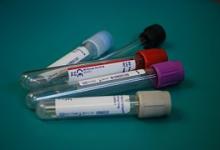Where are we at with PD-1 agonism? Save

Promising novel mechanisms of action always create excitement, but the immune checkpoint PD-1 has cemented itself in the news far more than most. This fame is primarily from therapeutic inhibition in cancer and rheumatological inflammatory sequelae that emerge, but invoking the inverse and using PD-1 agonism to treat classical autoimmunity has subsequently been making its own mark. Given the evident plausibility, how do we feel about invoking the opposite and agonising PD-1 in classical autoimmunity? Recent results have spoken to the promise, but were always just the start of the story.
At ACR this year, we saw two contrasting phase 2b results presented for PD-1 agonists, and perhaps there are more questions than answers. In a corner of the poster hall there were details in small print illustrating the decision to stop the peresolimab RA development process late last year, on both efficacy and safety grounds, something of a shock after their promising phase 2a results published in NEJM. In contrast, at the top of the order in the late breaking plenary, rosnilimab presented its phase 2b results and was wished all the best from the chair for its phase 3 plans.
Escalating placebo response rates make it increasingly difficult to compare response rates between different RA studies, as the 60-40-20 rule becomes an anachronism, but good responses in a largely refractory RA population are the minimum in the current environment for a RA therapy to proceed to phase 3. It is a bar that peresolimab failed to clear (along with many other novel mechanisms of action therapies in recent years, such as mavrilimumab), but rosnilimab has done enough by this conventional measure to keep on going.
The story was more exciting than that, though – the most promising efficacy finding was the promise of a legacy effect, something not tested with peresolimab, but an idea that makes strong sense given the role of PD-1 in RA tolerance. Ten weeks after cessation of the drug at week 28, the vast majority of responders maintained that same level of response. We are so used to the idea to b/tsDMARDs where cessation means quick washout, that flare is inevitable in the days and weeks after stopping therapy, that the idea that a therapy would change the underlying process is a strong but foreign narrative.
There is a sense with this, from the translational science plausibility and these clinical data, that we might be doing better than skimming the top off the inflammation, but instead might be dealing with the underlying process. That remains highly unproven and speculative, but if so would join a number of other therapies seeking to disrupt the RA treatment paradigm. These therapies, including antigen-specific immunotherapy (ASITI) and CAR-Treg, are aiming beyond just ongoing control, but to induce a change to the underlying disease. If they succeed, they represent as substantial a paradigm shift in RA care in a crowded market of b/tsDMARDs which basically all do the same thing. Efforts to do something different and break free of the cycle of chronic disease are just as exciting as the promise behind CAR-T in lupus.
The question with PD-1 agonism, however, has always been about safety. PD-1 is best known today for being the target for inhibition in cancer immunotherapy, in one of the most commercially successful drug classes, representing a true revolution in oncology and a deserving Nobel Prize. Doing the opposite seems unnerving to some, to say the least. The same might have been said of abatacept, knowing that its agonistic target CTLA-4 is inhibited in one of the other big classes of cancer immunotherapy, although there are some important mechanistic differences between these two immune checkpoints. It was put to me that we were completely oblivious to CTLA-4’s importance in cancer when abatacept came to market, but squeamishness or confidence can only come from human clinical data.
Peresolimab has not helped that confidence. The poster detailed out a varied list of eight malignancies amongst the 350 patients in active treatment arms in its phase 2b study, many happening early (three within the first three months, which naturally raises questions). This was not a signal seen in the phase 2a result, and hit the underlying fears of many. Furthermore, a possible cardiovascular signal was evident too, salt in the wound.
Will rosnilimab fail on the same count? Critically, in the follow-up until week 38, there were no malignancies seen and only one major adverse cardiovascular event (out of 318 treated patients). Plausibly, given the direct role that PD-1 has in cancer immune surveillance, it is possible that we will not have to wait years to see a cancer signal compared to what we have done for JAK inhibitors, although perhaps 38 weeks is not long enough, and peresolimab’s study captured new malignancies at 14 months after treatment.
Will the limited treatment exposure with subsequent cessation make a difference? From the plenary podium, Paul Emery also made clear some substantive differences between the molecules: a membrane-proximal epitope location for more targeted depletion of PD-1hi cells, and a sparing of PD-L1 engagement which plausibly could preserve physiologic PD-L1/PD-1 engagement such as that required in cancer surveillance. Both treatment exposure and molecular differences could plausibly help, but there will be enormous scrutiny on following the treated patients from this phase 2b cohort, beyond these first 38 weeks.
Beyond that, it remains to be seen whether established RA is the ideal target disease for PD-1 agonism. In a different abstract in the late breaking, it was suggested in the questions that established RA might be an inherently persistent disease and may not as readily resolve with a targeted intervention. There is strong logic to this, and it may be the case that early RA is a better place for treatment, or other diseases with analogous immune-related adverse events following PD-1 inhibition, such as polymyalgia rheumatica, Sjogren’s disease, and myositis. For now, however, RA’s primacy as our prototypic disease in drug development reigns, and baited breath will follow the PD-1 agonism story and its clinical results.










If you are a health practitioner, you may Login/Register to comment.
Due to the nature of these comment forums, only health practitioners are allowed to comment at this time.